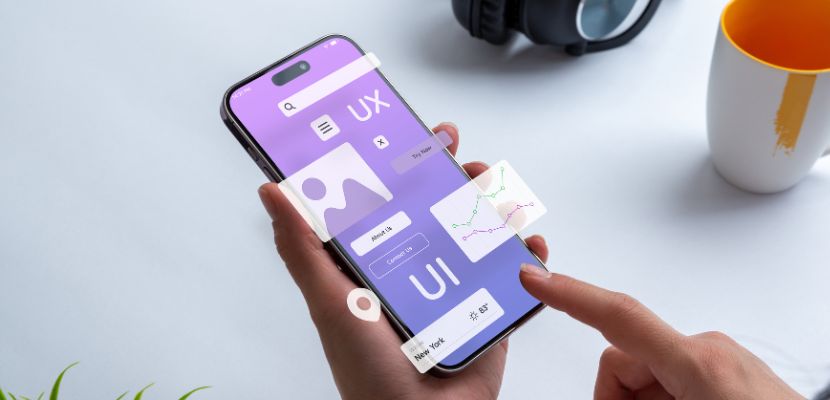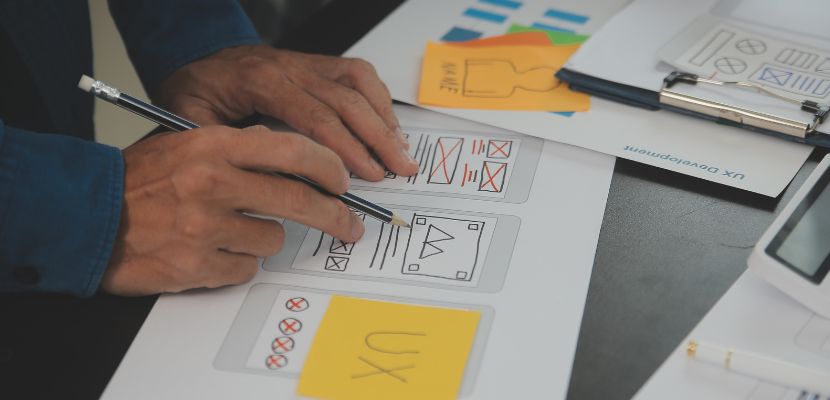User experience (UX) focuses on creating meaningful and enjoyable interactions between users and a product or service.

What Is User Experience (UX)?
User experience (UX) refers to the overall impression and interaction a user has with a product, system, or service. It encompasses every aspect of the user's journey, including ease of use, accessibility, efficiency, and the emotional response evoked during the interaction.
UX is a multidisciplinary field that integrates principles of design, psychology, technology, and human behavior to ensure that a product or service meets user needs seamlessly and intuitively. Its goal is to create positive and meaningful experiences by anticipating user expectations, addressing pain points, and fostering satisfaction through functionality and design coherence. A strong focus on UX can lead to improved user retention, loyalty, and the overall success of a product or service.
What Are the Elements of User Experience?
The elements of user experience refer to the key components that contribute to designing and delivering a product or service that effectively meets user needs and provides meaningful interaction. These elements include:
- Strategy. Establishing the purpose of the product or service and aligning it with user needs and business objectives. This involves user research, market analysis, and defining the goals of the experience.
- Scope. Determining the specific features and functionality that the product or service will offer. It includes prioritizing requirements and setting boundaries for what the final experience will encompass.
- Structure. Organizing the information architecture and interaction design to ensure users can navigate and engage with the product intuitively. It focuses on logical flow and hierarchy.
- Skeleton. Translating the structure into wireframes, layouts, and other visual representations of how content and interactive elements will be positioned on the interface.
- Surface. The final visual design layer that combines aesthetics, branding, and usability to create an engaging and cohesive experience. This includes colors, typography, images, and other visual elements.
User Experience Examples

Here are a few examples of user experience in action:
- Ecommerce checkout process. An online store with a streamlined, user-friendly checkout process offers an excellent UX. Features such as autofill for shipping details, multiple payment options, a progress indicator, and a clear confirmation page contribute to a seamless and satisfying experience for users.
- Ride-sharing apps. Apps like Uber or Lyft excel in UX by providing users with real-time location tracking, estimated arrival times, driver profiles, and fare transparency. These features ensure convenience and build trust during the ride-booking process.
- Streaming services. Platforms like Netflix enhance UX with personalized recommendations, intuitive navigation, and features like "continue watching" or "skip intro." These elements cater to user preferences and improve engagement.
- Mobile banking apps. A banking app with a well-designed UX allows users to easily check their balances, transfer funds, pay bills, and access support. Features like biometric login, simple navigation, and real-time transaction updates enhance usability and trust.
- Fitness wearable devices. Devices like Fitbit or Apple Watch provide excellent UX by offering real-time health metrics, customizable goals, and seamless syncing with smartphones. The combination of hardware and app design ensures an engaging and user-friendly experience.
Why Is User Experience Important?
User experience is crucial because it directly influences how users perceive, interact with, and value a product, service, or brand. A well-designed UX creates meaningful, efficient, and enjoyable interactions, which are essential for achieving both user satisfaction and business goals. Here's why UX is important:
- Enhances user satisfaction. A seamless and intuitive experience helps users achieve their goals with ease, leading to higher satisfaction and positive engagement.
- Increases retention and loyalty. Users are more likely to return to a product or service that meets their needs effectively, fostering loyalty and repeat use.
- Boosts accessibility and inclusivity. Good UX ensures that products are accessible to a broader audience, including individuals with disabilities, thereby expanding reach and usability.
- Improves brand perception. A positive experience builds trust and strengthens the brand image, distinguishing it from competitors.
- Drives conversions and revenue. UX optimizations, such as simplifying navigation or enhancing checkout flows, reduce friction and encourage users to take desired actions, ultimately increasing conversions.
- Reduces costs. A well-thought-out UX minimizes user errors, support requests, and the need for redesigns, saving time and resources in the long run.
What Is a Good UX Design?
A good UX design is one that provides users with a seamless, intuitive, and enjoyable experience while effectively meeting their needs and achieving the goals of the product or service. It strikes a balance between functionality, aesthetics, and usability, ensuring that users can easily interact with the product without confusion or frustration. Key characteristics of a good UX design include:
- User-centric. Focused on understanding and addressing the needs, preferences, and behaviors of the target audience through research and testing.
- Intuitive. Ensures that navigation, functionality, and interactions are logical and easy to understand, minimizing the learning curve for users.
- Accessible. Designed to be usable by a diverse audience, including individuals with disabilities, through compliance with accessibility standards and inclusive design principles.
- Consistent. Maintains uniform design patterns, layouts, and interactions across the product, creating familiarity and reducing cognitive load.
- Efficient. Helps users complete tasks quickly and effortlessly by eliminating unnecessary steps, offering shortcuts, and providing clear instructions.
- Engaging. Combines aesthetics with functionality to create an enjoyable and visually appealing experience that resonates with users emotionally.
- Responsive. Adapts seamlessly across different devices, screen sizes, and platforms to provide a consistent experience in various contexts.
- Feedback-oriented. Offers clear feedback for user actions, such as confirmation messages, error notifications, or visual indicators, ensuring users feel in control.
What Is Considered Bad UX Design?
A bad UX design is one that frustrates, confuses, or alienates users, preventing them from effectively accomplishing their goals. It often results from a lack of user focus, poor planning, or insufficient testing. Bad UX can harm a product’s reputation, reduce user satisfaction, and lead to decreased engagement or abandonment. Key characteristics of bad UX design include:
- Complex navigation. Users struggle to find information or complete tasks due to unclear menus, overly complicated structures, or inconsistent layouts.
- Unintuitive interactions. Features or functions are difficult to understand, requiring users to spend excessive time learning how to use the product.
- Slow performance. Long loading times or laggy interactions disrupt the user experience, leading to frustration and abandonment.
- Poor accessibility. The design fails to accommodate diverse user needs, excluding individuals with disabilities or those using assistive technologies.
- Lack of feedback. Users are left uncertain about whether their actions were successful, such as clicking a button that provides no visual or auditory confirmation.
- Overwhelming clutter. The interface is crowded with unnecessary elements, excessive text, or distracting visuals, making it hard to focus on key tasks.
- Inconsistent design. Mismatched fonts, colors, button styles, or interaction patterns confuse users and reduce the sense of cohesion.
- Error-prone processes. Designs that increase the likelihood of user errors, such as unclear forms or ambiguous instructions, lead to frustration and reduced trust.
- Non-responsive design. The product doesn’t adapt well to different devices or screen sizes, making it challenging to use on mobile phones, tablets, or other platforms.
What Is UX vs. UI?

User experience (UX) and user interface (UI) are closely related but distinct concepts in design.
UX focuses on the overall experience of using a product, including its functionality, usability, and how well it meets user needs. It involves research, strategy, and design to ensure a seamless and satisfying journey for the user.
UI, on the other hand, deals with the visual and interactive aspects of the product, such as buttons, icons, layouts, and typography. While UX determines how a product works and feels, UI defines how it looks and interacts.
Together, UX and UI work in harmony to create cohesive and enjoyable user experiences.